Search results for: 'Art'
-
 Sasanian stamp seal with animal and star
Sasanian stamp seal with animal and starThe nice seal of orange carnelian is engraved with a schematic scene. From the period of Sasanian rule in the Near East.
Price: on request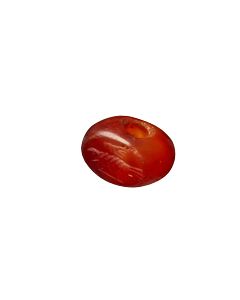 Sasanian stamp seal with plant depiction
Sasanian stamp seal with plant depictionWonderful piece made of dark orange Carnelian. From the period of Sasanian rule in the Near East.
Price: on request Roman wall painting
Roman wall paintingThe fresco shows a young man in full military gear. Interpretations include Mars, the god of war, and Brutus, the murderer of Caesar. The impressive piece is an absolute rarity in its outstanding condition and quality.
Price: on request Roman facade decoration shaped as theatre mask
Roman facade decoration shaped as theatre maskImpressive and striking marble mask. It once adorned the upper facade of a villa or a public building during Roman Imperial times.
Price: on request Sasanian stamp seal with winged horse
Sasanian stamp seal with winged horseDark orange Carnelian with engraved schematic depiction of the mythical creature. From the period of Sasanian rule in the Near East.
Price: on request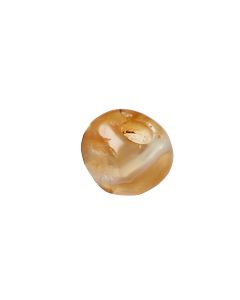 Sasanian stamp seal with winged animal
Sasanian stamp seal with winged animalWonderful stone, a cream-coloured agate. The engraved animal is probably a gazelle ready to jump. From the period of Sasanian rule in the Near East.
€190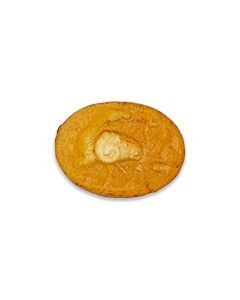 Roman intaglio with gryllos
Roman intaglio with gryllosThe hybrid creature was extremely popular during the Roman Empire. It was believed to convey magical powers.
Price: on request Large Roman cinerary urn
Large Roman cinerary urnImpressive jar from the 1st or 2nd century AD. Great condition for ancient glass of this size. 26cm high.
€4,800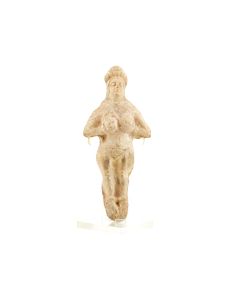 Female figure from Elam
Female figure from ElamMold-made clay figure, a fertility idol or erotic image from the Middle Elamite period, 1500 to 1100 BC.
Price: on request Mesopotamian cylinder seal with water creatures
Mesopotamian cylinder seal with water creaturesThe seal of light red stone shows two panels with interposed and stylized aquatic animals. Made around the onset of Bronze Age in Mesopotamia.
Price: on request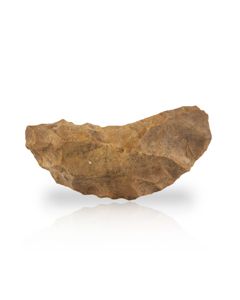 Stone Age bow scraper from Egypt
Stone Age bow scraper from EgyptThe Paleolithic tool is shaped like a sickle. Thebes has been handed down as the place of origin. From a 100 year old museum collection.
Price: on request Stone Age bow scraper from Egypt
Stone Age bow scraper from EgyptThe Paleolithic tool is of beautiful shape and color. Thebes has been handed down as the place of origin. From an old museum collection.
Price: on request Roman gold necklace with beads
Roman gold necklace with beadsThe necklace impresses by its wonderful condition, including the original agate beads. Probably from the Roman province of Moesia. 100 to 250 AD.
€9,500 Roman blue glass bowl
Roman blue glass bowlThe small storage vessel impresses with its beautiful cobalt blue colour. It was made in the 1st century, probably in Italy.
Price: on request Three neolithic arrowheads from Egypt
Three neolithic arrowheads from EgyptThe Stone Age points are finely crafted and well preserved. From a 100 year old museum collection.
Price: on request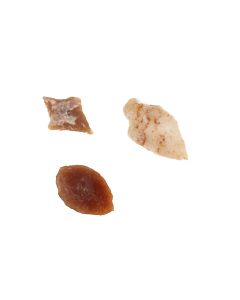 Three neolithic arrowheads from Egypt
Three neolithic arrowheads from EgyptThe Stone Age points are finely crafted and in a good state of preservation. From a 100 year old museum collection.
€120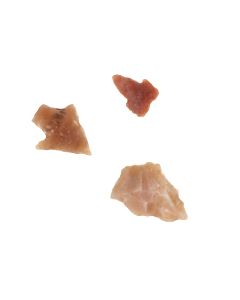 Three neolithic arrowheads from Egypt
Three neolithic arrowheads from EgyptThe Stone Age points are finely crafted. From a 100 year old museum collection.
Price: on request Three neolithic arrowheads from Egypt
Three neolithic arrowheads from EgyptThe Stone Age points are finely crafted. From a 100 year old museum collection.
€120 Roman bone toy doll
Roman bone toy dollTall and intricately carved bone figurine portraying a stylized woman. From the 2nd century AD.
€1,500 Painted Bronze Age cup
Painted Bronze Age cupThe well preserved Bronze Age pottery bears a geometric painted pattern. Acquired in 1977 at Davies Antiques in London, it is claimed to have been found in Syria.
Price: on request Greek terracotta head of a woman
Greek terracotta head of a womanAbout 5th century B.C. From an old collection of a Frech engineer.
Price: on request Head of a woman with melon coiffure
Head of a woman with melon coiffureAbout 5th century B.C. From an old collection of a Frech engineer.
Price: on request Hellenistic female head with melon coiffure
Hellenistic female head with melon coiffureAbout 5th century B.C. From an old collection of a Frech engineer.
Price: on request Moche erotic pottery
Moche erotic potteryExceptional depiction of figures on a raft having intercourse. From the golden age of the Moche civilization.
€2,520 Western Asiatic macehead
Western Asiatic maceheadHeavy head of a mace with a globular shape. Nicely polished stone. From the Early Bronze Age of Western Asia.
€670 Bronze ornaments with goddess of victory
Bronze ornaments with goddess of victoryMatching pair of appliques that were once soldered to a Roman vessel. They show the goddess of victory, Victoria.
Price: on request Spätrömische Glasflasche
Spätrömische GlasflascheElegant geformte Glasflasche mit Trichterhals und Standring. Vollständig erhalten und mit der schönen Fundpatina und fließenden Form ein beeindruckendes Objekt.
Price: on request Eisenzeitliche Karaffe aus Keramik
Eisenzeitliche Karaffe aus KeramikFund aus Israel, Ausfuhr mit Genehmigung der israelischen Kulturbehörde (IAA) 2008. Höhe 122 mm, Durchmesser 74 mm, durch Gewicht und Größe ein sehr beeindruckendes Objekt.
Price: on request Römischer Fingerring aus Gold mit Intaglio
Römischer Fingerring aus Gold mit Intagliomit Karneoleinsatz, darin Intaglio von Salus mit Schlange. Die Echtheit wird durch ein Zertifikat von Prof. Sergey Nechayev garantiert.
Price: on request Paläolithische Pfeilspitze oder Speerspitze
Paläolithische Pfeilspitze oder Speerspitze35.000 bis 30.000 v. Chr., Jungpaläolithikum. Letzte Phase der Altsteinzeit, Homo sapiens. Patinierter Flintstein mit deutlichen Bearbeitungsspuren.
Price: on request Pfeilspitze oder Speerspitze aus der Altsteinzeit
Pfeilspitze oder Speerspitze aus der Altsteinzeit35.000 bis 30.000 v. Chr., Jungpaläolithikum. Letzte Phase der Altsteinzeit, Homo sapiens. Patinierter Flintstein mit deutlichen Bearbeitungsspuren.
Price: on request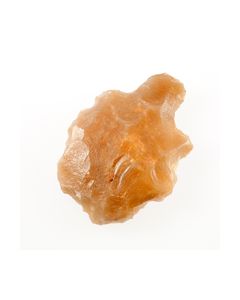 Pfeilspitze oder Speerspitze aus der Altsteinzeit
Pfeilspitze oder Speerspitze aus der Altsteinzeit35.000 bis 30.000 v. Chr., Jungpaläolithikum. Letzte Phase der Altsteinzeit, Homo sapiens. Patinierter Flintstein mit deutlichen Bearbeitungsspuren.
Price: on request Pfeilspitze oder Speerspitze aus der Altsteinzeit
Pfeilspitze oder Speerspitze aus der Altsteinzeit35.000 bis 30.000 v. Chr., Jungpaläolithikum. Letzte Phase der Altsteinzeit, Homo sapiens. Patinierter Flintstein mit deutlichen Bearbeitungsspuren.
Price: on request Paläolithische Pfeilspitze oder Speerspitze
Paläolithische Pfeilspitze oder Speerspitze35.000 bis 30.000 v. Chr., Jungpaläolithikum. Letzte Phase der Altsteinzeit, Homo sapiens. Patinierter Flintstein mit deutlichen Bearbeitungsspuren.
Price: on request Paläolithische Pfeilspitze oder Speerspitze
Paläolithische Pfeilspitze oder Speerspitze35.000 bis 30.000 v. Chr., Jungpaläolithikum. Letzte Phase der Altsteinzeit, Homo sapiens. Patinierter Flintstein mit deutlichen Bearbeitungsspuren.
Price: on request Paläolithische Pfeilspitze oder Speerspitze
Paläolithische Pfeilspitze oder Speerspitze35.000 bis 30.000 v. Chr., Jungpaläolithikum. Letzte Phase der Altsteinzeit, Homo sapiens. Patinierter Flintstein mit deutlichen Bearbeitungsspuren.
Price: on request

